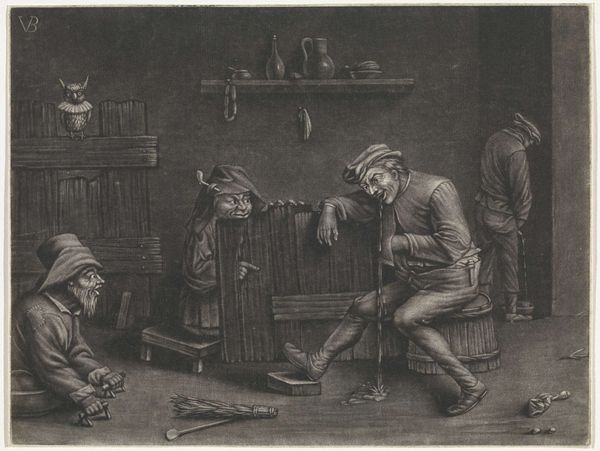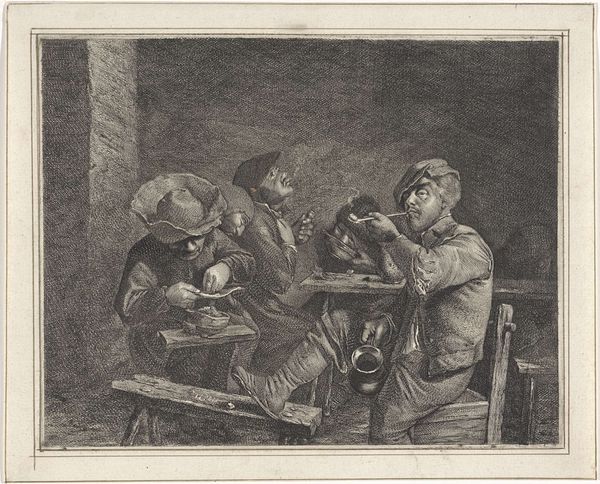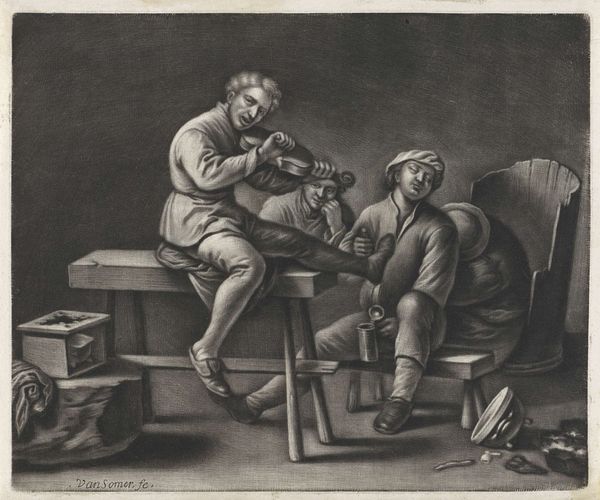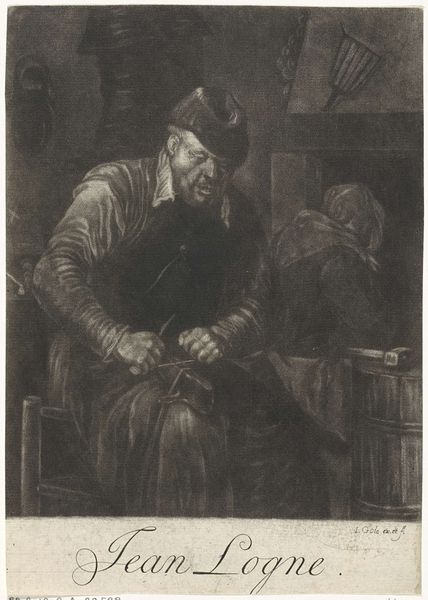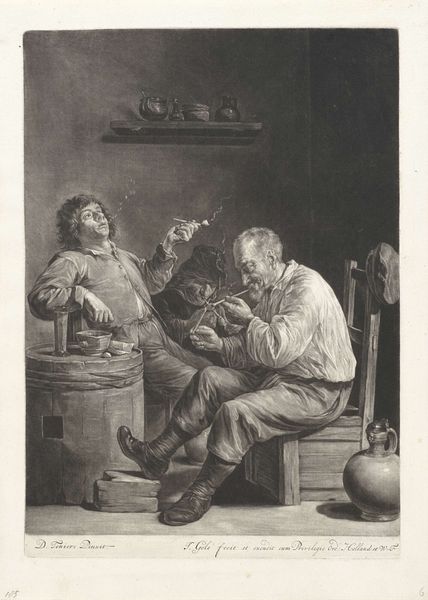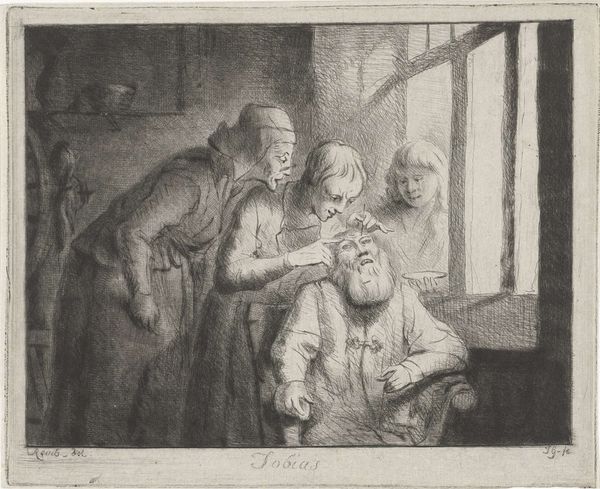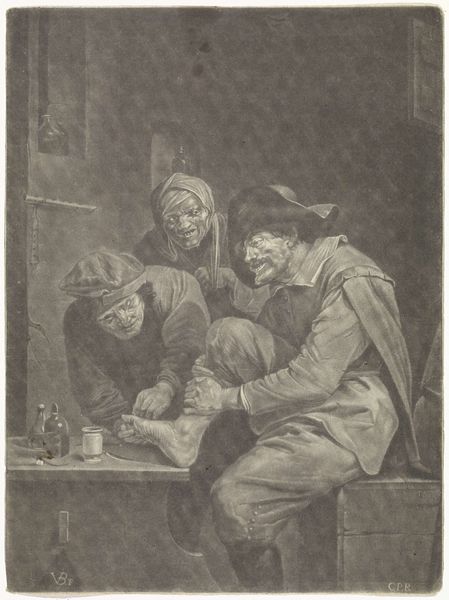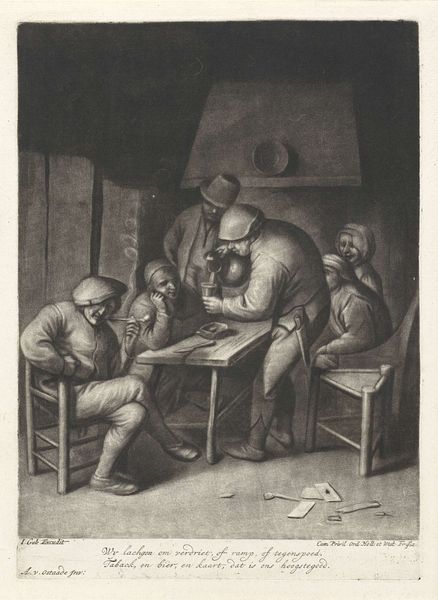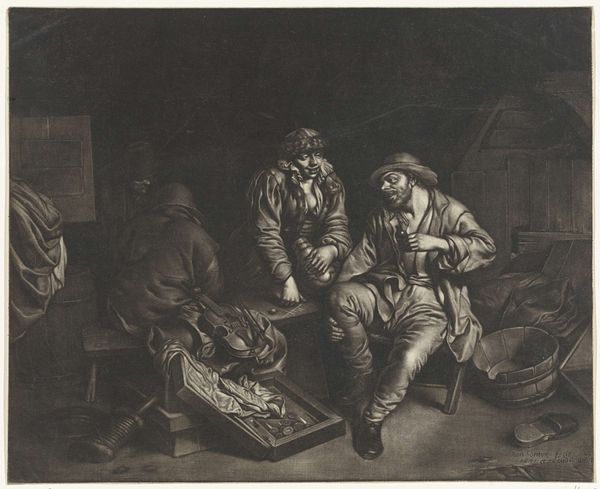
Dimensions: height 180 mm, width 230 mm
Copyright: Rijks Museum: Open Domain
Jan van der Bruggen created this piece called Keisnijder around the late 17th century using pen and brown ink, depicting a scene of quackery. The dominant visual symbol is the extraction of a supposed 'stone of madness' from a patient's head, a motif that dates back to the Middle Ages. This act, often portrayed in art, is not just a surgical procedure; it is a symbolic gesture. It represents humanity's eternal quest to extract the irrational, the foolish, from our very being. Think of Hieronymus Bosch's rendition, where the extraction is performed with an almost religious solemnity, reflecting a blend of hope and skepticism. The 'stone of madness' is like the alchemist's stone, a metaphor for purging unwanted aspects of the self. It has resurfaced, evolved, and taken on new meanings in different historical contexts. It reveals our ongoing engagement with the mysteries of the mind, in this non-linear, cyclical progression.
Comments
No comments
Be the first to comment and join the conversation on the ultimate creative platform.

